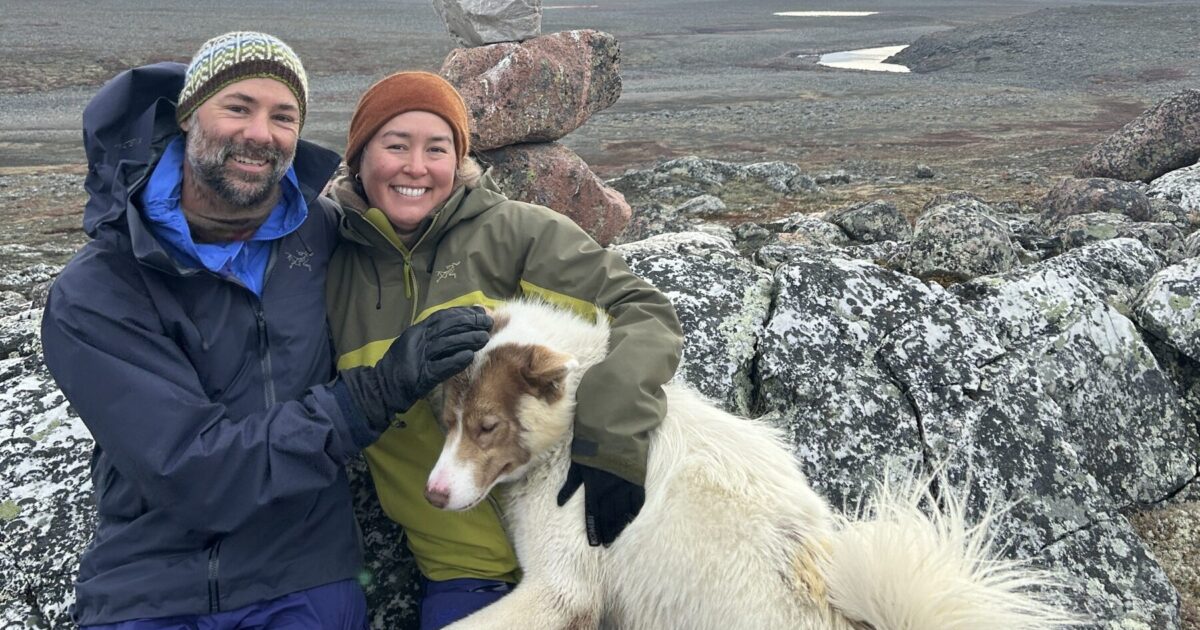Gayle Uyagaqi Kabloona reflects on ‘incredible’ experience on migration route used by her family long ago
After retracing the steps of her family’s migration route south from near Back River to the winter caribou-hunting grounds her grandparents used, Gayle Uyagaqi Kabloona said at times she felt like she was being guided by her ancestors.
“It was incredible. Wild. Spectacular,” she said Monday, after completing the 23-day trek.
The group — consisting of Uyagaqi Kabloona, her partner Erik Reid, sister Kilikvak Kabloona and friends Victoria Perron and Tess Girard — started Aug. 29 on the Back River, approximately 200 kilometres north of Agnico Eagle’s Meadowbank Mine.
Uyagaqi Kabloona chose that spot to start because it’s where her family used to spend springs and summers until the 1950s when her grandparents moved to a permanent settlement in Baker Lake.
They found several pieces of evidence left by Uyagaqi Kabloona’s ancestors, including an old boat, tent rings and inuksuit.
With the help of Uyagaqi Kabloona’s family, they were able to use the inuksuit to find the place where some of her ancestors are buried.
“If you lined them up you were pointed directly at where the graves were,” she said.
“All of the crosses had fallen over after so many years, so we just had to go out and look around for the mounds of rocks. We were able to put all of the crosses back up so they can be found in the winter time now if anyone goes up there.”
The group’s destination was a traditional winter caribou hunting spot called Amarulik, which means “the place where there are wolves.”
And they did encounter plenty of wildlife — including wolves — along the way.
At the midway point, the group made it to a cache of food that had been left for them and found a large bite mark in one of the packages.
“For that night and the previous night we had heard wolves howling in the hills and it was really cool and they sounded really close but we didn’t see anything,” Uyagaqi Kabloona said.
“Then just as we were about to leave the area, there was more howling and then we could see them on the hills.”

Tempe examines a caribou bone while Erik Reid looks on as the sun sets on the tundra. (Photo Gayle Uyagaqi Kabloona)
One of the wolves started to approach, she said, and her partner Reid ended up firing a warning shot to scare it away. The group also also came across a family of muskoxen with a young calf, which led to a precarious situation when a bull decided Uyagaqi Kabloona’s sister was a threat and charged at her down a hill. Again, they fired a warning shot to scare it off.
While the trip had been plotted out with maps with the help of her 75-year-old father Thomas Kabloona, who last took the trip when he was five, Uyagaqi Kabloona said the group was able to navigate much of the way by using inuksuit that had been placed generations ago.
“We were having a great time being able to follow exactly where my family members put up navigational aids for people in the future,” she said. “It was amazing; it felt incredible to be [navigating] the whole way and then reach a decision and find an inuksuk on the way. You’re like, ‘Oh I made the right choice and I’m not the first person to be doing this.’”
Making the journey was a way to experience what life was like for her family in Inuit Nunangat before colonization, Uyagaqi Kabloona said.
“It was amazing to be there in the place where they were living,” she said.




